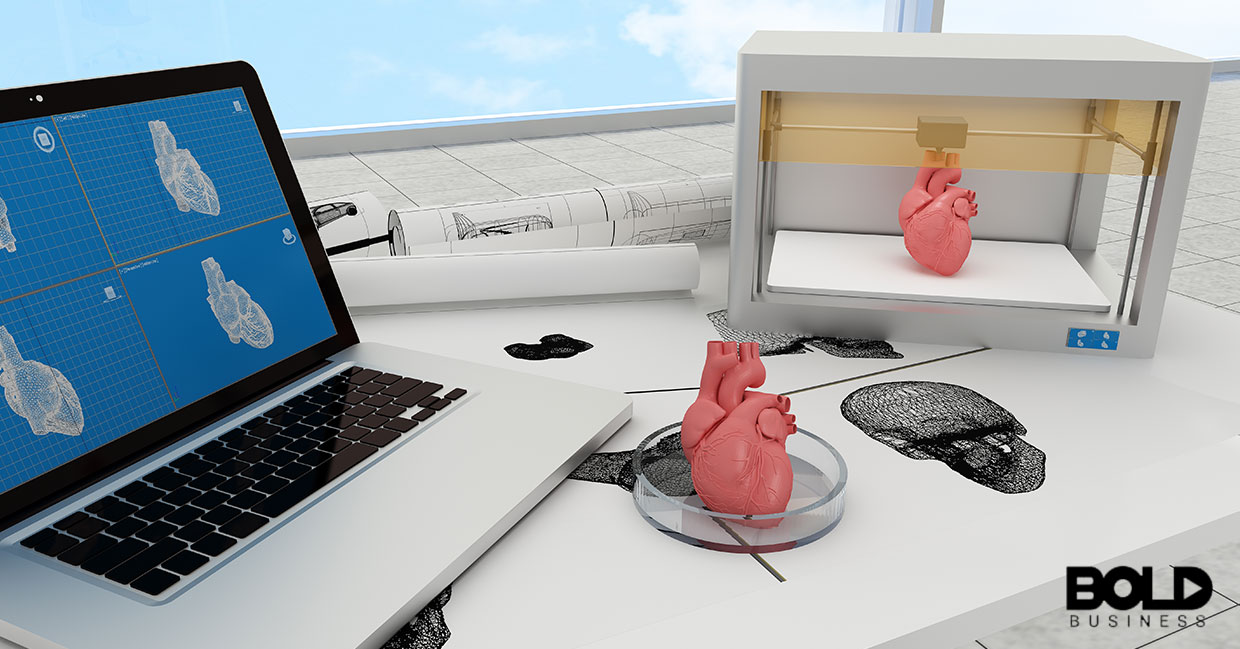Wearable technologies represent a booming industry worldwide. Reportedly, over 370 million wearable devices will be shipped next year. Likewise, the industry is now estimated to be around $25 billion. It’s therefore not surprising that major companies like Google, Amazon, Apple, Microsoft, and Facebook are exploring this market. And one of the most recent innovations in the field looks to link technology with our skin. This is the promise of smart tattoos.
Over the last several decades, the popularity of tattoos has grown significantly. In fact, their level of attraction has occurred around the same time that smart phones came into existence. So, why not pair the two together? By using our skin as a potential interface to our smart devices, new opportunities emerge. Not only might this usher in greater convenience, but it could have tremendous implications for the health and fitness industry. These are the impacts that major companies are banking on with these new wearable technologies.
“The wearables you buy today are pretty much all only a reduced smartphone. You shrink the smartphone display, put it on a wristwatch, and you have it. But what if we take that to the next step. What if these devices can not only read signals from the human body but also intersect and interject signals into the human body?” – Dr. Pedro Lopes, Assistant Professor, University of Chicago, Human Computer Integration Lab
The Potential of the Smart Tattoo
The basics of a smart tattoo involve the attachment of some type of electronic circuitry to your skin. In some cases, these wearable technologies involve a sticker while in others they are rub-on tattoos. Once in place, the digital art serves as a sensor that you can control. By stroking its surface, pinching the adjacent skin, or moving in a particular manner, you can send signals. These instructions can then communicate with your smart phone or wrist watch. Or they may serve as a contact-free way of interacting with other devices. It would be pretty cool to pay for your groceries with your smart tattoo, huh?

This is not the only potential use of these new wearable technologies. A smart tattoo may also be able to monitor health data as well. Currently, researchers at Harvard and MIT have been developing a smart tattoo called the Dermal Abyss. Using bio-sensitive ink, the adhesive on the skin is able to detect sodium and glucose levels under the skin. When these things change, the Dermal Abyss changes color, providing instantaneous feedback. The researchers anticipate this could be ideal for health monitoring patients with diabetes or prone to dehydration. By linking color data to a smartphone app, health monitoring would be quite simple.
“[Smart tattoos] are also skin-friendly, as they are attached to the skin with a biocompatible, medical-grade adhesive. Users can, therefore, decide where they want to position the sensor patch and how long they want to wear it.” – Jürgen Steimle, Lead Researcher, Future Interfaces Group, Human-Computer Interaction Institute, Carnegie Mellon University
Different Companies, Different Smart Tattoos
In addition to Dermal Abyss, some major companies are pursuing these types of wearable technologies as well. For example, iSkin is a product being developed by Max Plank Institute for Informatics. In collaboration with Saarland University in Germany, the iSkin smart tattoo uses a flexible rubber silicon sticker to affix to the skin. Users also have the advantage of designing their own patterns on the iSkin patches. Its touch-sensitive surface can then be used to control various mobile devices.
Another smart tattoo product is being developed by Microsoft in conjunction with MIT. Named DuoSkin, this wearable technology consists of a gold leaf platform that is both durable and highly aesthetic. The circuitry is created using graphic design software, and it is attached to a gold leaf using an adhesive. DuoSkin tattoos are then put into place using a water transfer method onto the skin. As a result, they are temporary and can be relocated if preferred. These also serve as a touchpad for smart devices. However, Microsoft plans on developing DuoSkin further for health and fitness applications.
The smart tattoo receiving the most press as of late is Google’s SkinMark. Google has been investigating wearable technologies for some time with notable flops in the past. But with SkinMark, Google hopes things will be different. This rub-on smart tattoo is composed of conductive ink that is printed in tattoo paper. When swiped, stretched, or bent, it can convey specific instructions to other devices. The nice thing about SkinMark is its ability to come in different designs, shapes and sizes. As a result, it can be placed in variety of places on the body.
“Through a vastly reduced tattoo thickness and increased stretchability, a ‘SkinMark’ is sufficiently thin and flexible to conform to irregular geometry, like flexure lines and protruding bones.” – Google’s Research Team on wearable technologies
Wearable Technologies with Some Hurdles Ahead
Notably, some concerns exist regarding these new wearable technologies. The major ones involve privacy of data. The enormous amount of data that might be gained from a smart tattoo is worth noting. Not only might this involve user behaviors, but it could also relay important health data as well. Google alone already makes $160 billion annually from targeted advertising. Thus, it’s not surprising so many major companies are interested in all categories of wearable technologies including a smart tattoo.
Despite these issues, the promise of these wearable devices is just now being contemplated. In addition to the potential uses described here, more advanced conceptions exist as well. For example, wearable technologies could eventually be used to stimulate movements using the body’s sensory feedbacks. This would have significant repercussions for rehabilitation and disability needs. Though smart tattoos are a small step in this direction, they are a notable one nonetheless.
For more stories on how bold accomplishments are changing the world, check out Ed Kopko’s PROJECT BOLD LIFE: The Proven Formula to Take on Challenges and Achieve Happiness and Success.






